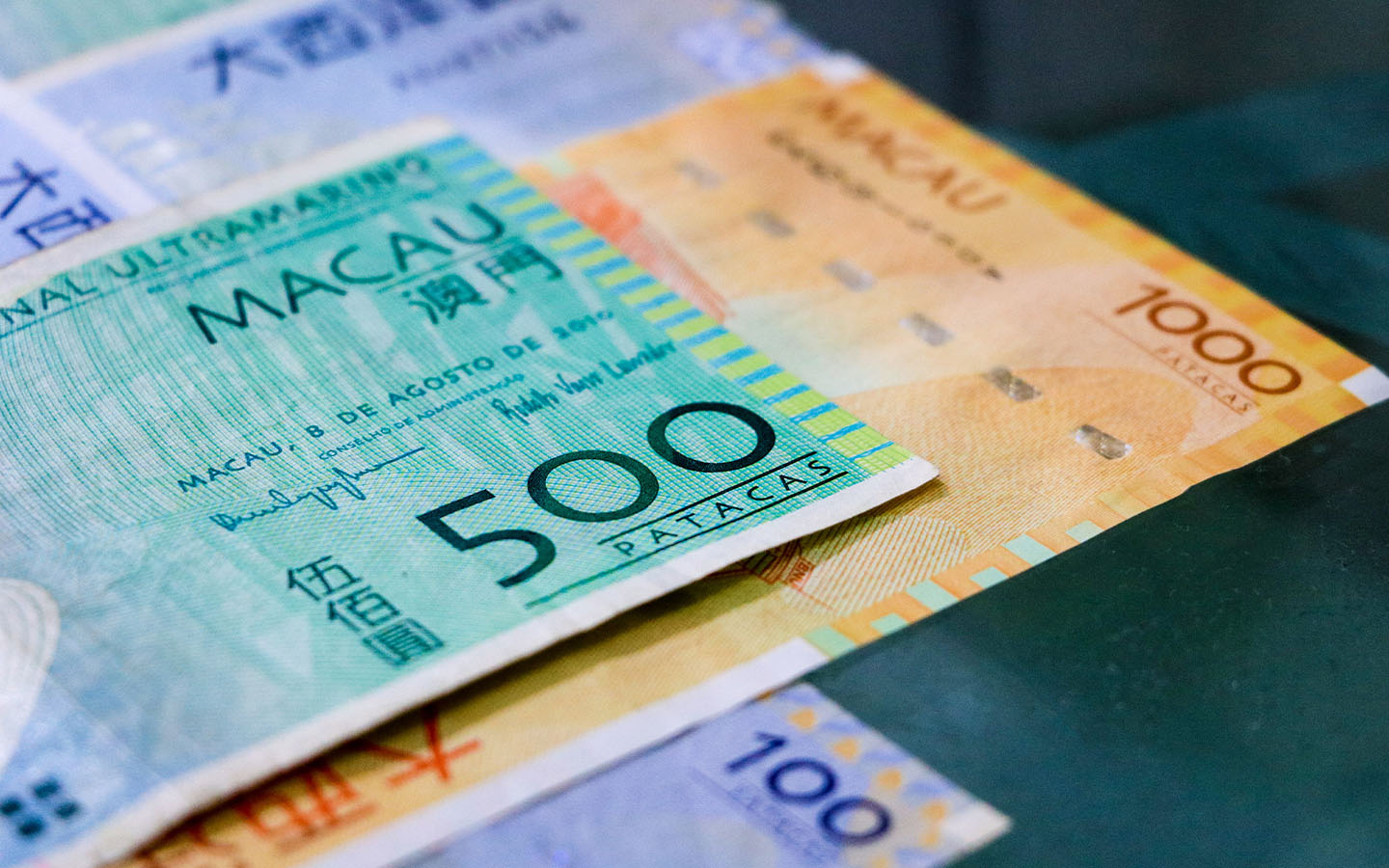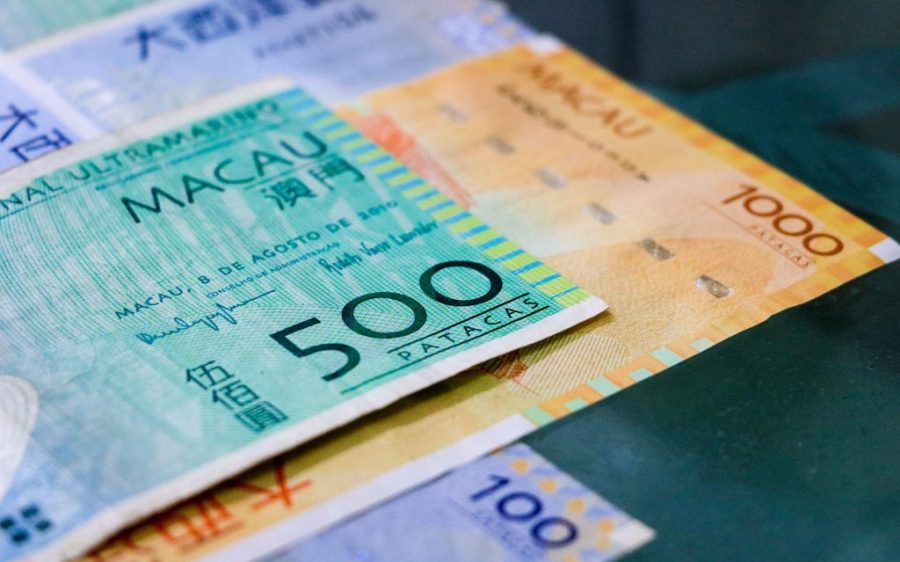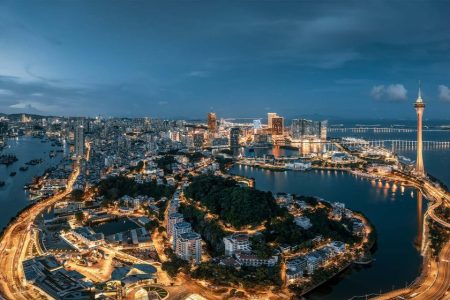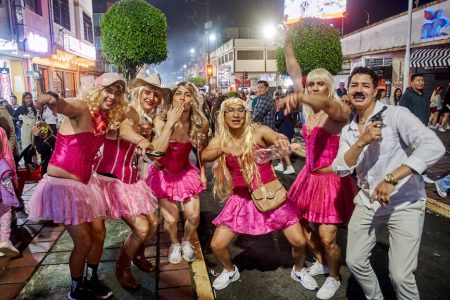It’s no secret that Macao is astoundingly rich from its gambling industry – even if the wealth isn’t evenly distributed. To partly redress the balance, the government even doles out a one-off cash payment to local residents each year through its “Wealth Partaking Scheme.”
Introduced in 2008, this initiative was originally intended to help residents weather the financial crisis of that year, although it has since morphed into a scheme to give locals a cut of Macao’s exorbitant casino earnings.
Over the past 16 years, adjustments have been made to the payment amount, with the total for permanent residents growing from 5,000 patacas (US$623) in 2008 to the current 10,000 patacas (US$1,246).
[See more: The Internet asked, ‘What can you do in Macao?’ and we answered]
While the program’s merits are open to debate, Macao’s chief executive Sam Hou Fai made it clear after taking office in December that he intends to continue the initiative, as it is “a widely anticipated measure to benefit the people of Macao.”
With the 2025 payments due to begin rolling out from 15 July, Macao residents will once again have some extra cash to spare. If you’re among one of the lucky permanent residents eligible for the 10,000 patacas payment, now is the time to start thinking about what you intend to do with the money.
Whether you’re looking to splurge on some trendy fashion items, go on a luxury holiday, make an investment or donate to charity, here are some expert ideas on how to spend your 10,000 patacas.
Donate to charity

Your 10,000 patacas can greatly support a local charitable organisation, allowing them to further help vulnerable groups and raise awareness on issues such as women’s rights, poverty or elderly care.
Anima Macau is one organisation that is worth considering if you’re looking to donate. Founded in 2003, the charity has been a staunch defender of animal rights in Macao, rescuing vulnerable animals and sheltering abandoned ones.
According to Anima President Zoe Tang, the organisation currently cares for around 400 dogs in its dog shelter and roughly 300 cats in its cat paradise. Tang also points out that the charity looks after “more than 500 dogs and cats living in the streets or [on] construction sites” as part of its “Special Protection Program” that provides them with “food, sterilisation surgeries and medicine.”
[See more: There are more unwanted dogs and cats in Macao but fewer adoptions]
All this has come at a heavy financial burden, with the Anima President stating that “we have a debt of 1.5 million [patacas] now [from] food suppliers and vet expense[s].” For more information on how to donate to Anima, click this link.
Tang notes that there are other ways to support the organisation include adopting an animal, becoming an animal’s “godparent” by sponsoring them for 100 patacas per month or 1,200 patacas per year, supplying dog and cat food, as well as placing a donation box in one’s place of business. For more details on these other ways to contribute, contact Anima via Facebook or email ([email protected]).
Build a gaming rig
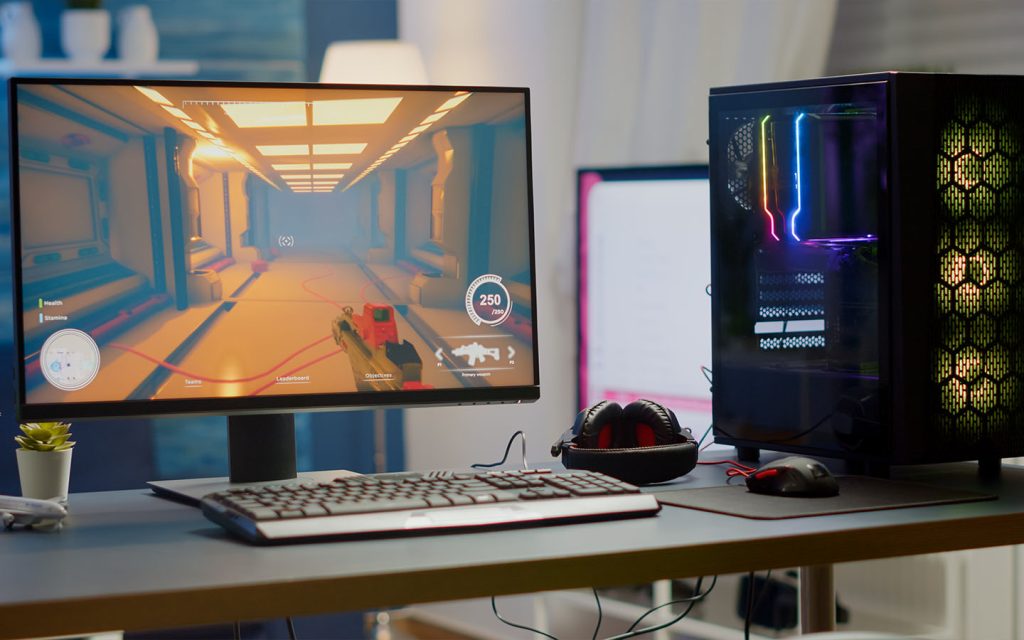
“With a budget of 10,000 patacas, you may be able to build an entry-level to intermediate computer for gaming,” says Tony Lam, the founder of the Macao-based video game studio, 4D Creativity. The local developer has released titles such as Fight the Horror and Work from Home for the PlayStation, Nintendo and Xbox platforms.
“I think a system with a GeForce RTX 5070 or equivalent graphics card would be good for a few years,” the game developer says, adding that one could also purchase a “decent gaming laptop with a similar budget.”
[See more: The ultimate guide to the best video game shops and arcades in Macao]
To build a 10K gaming computer that is capable of handling “almost every big title available with fair frame rates” over the next few years, as well as smaller ones, Lam suggests the following specs:
Central Processing Unit (CPU): AMD Ryzen 5 or Intel i5
Graphics Processing Unit (GPU): GeForce RTX 5070
Memory (RAM): At least 16GB D5 RAM
Storage: 1 TB M.2 SSD
Power Supply Unit (PSU): 700W PSU or above
Operating system: Windows 11
For those not into PC gaming, Lam says that “you may consider spending half the price for a game console like PlayStation 5 or the new Nintendo Switch 2, depending on what kind of games one plays.” Alternatively, the developer suggests a phone upgrade for those into mobile gaming.
Support local businesses in Macao
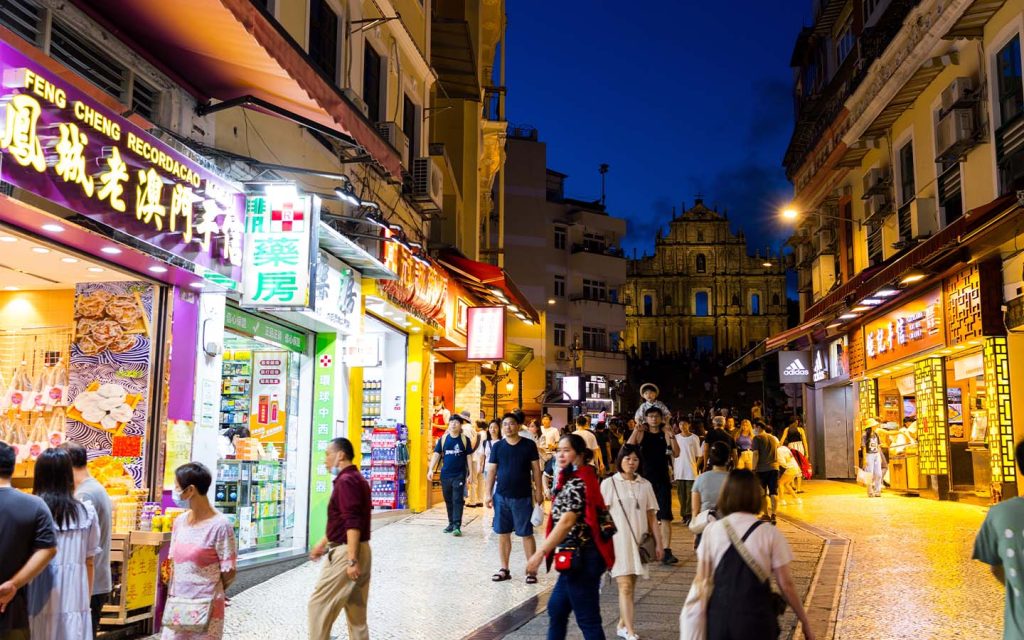
Long-term Macao resident, Suzanne Watkinson, knows the city better than most people. Having also lived in Hong Kong for more than 40 years, the managing director of the Macao real estate agency, Ambiente Properties, began visiting Macao from the 1980s, developing an affinity for the local people, culture, food, churches and historic sites.
“I enjoy the pace of life here and the ease and convenience of getting around, of travelling from one part of Macao to another in a short time,” Watkinson says.
[See more: Macao’s retail sector is in trouble. How long can small businesses hold out?]
As a recipient of the cash handout, the property specialist says she “greatly appreciate[s] the generosity of the Macao government.” Although Watkinson maintains that it is “up to the individual” to decide how the 10,000 patacas should be spent, she believes that “we need to keep the money in Macao as much as possible.”
Watkinson’s staycation ideas for the summer months of July and August, which are priced for one person, are indicative of this stance. This is how she would budget her 10,000 patacas:
See a show
- House of Dancing Water at City of Dreams: 1,100 patacas (for good seats)
- 2049 at MGM: Approximately 490 patacas
Pamper yourself
- Foot massage at Tranquil Spa, Taipa: 380 patacas
- Pedicure at Nirvana Spa, Ocean Plaza: 280 patacas
Do something at home
- Watkinson says she had “all seven of our air conditioners serviced and deep cleaned for 250 patacas each” (1,750 patacas)
Eat at a local restaurant
- Great meals are possible for 300 patacas a head, Watkinson says, so you could eat out five times for a mere 1,500 patacas
- “We enjoy Japanese food (Kingship in Taipa), Italian food (La Cucina Italiana in Taipa), Dim sum (Laurel Restaurant at Galaxy), Indian (Indian Garden, Taipa and Woodlands Indian Vegetarian Restaurant, NAPE) and casual Portuguese dining (at Fernando’s in Coloane),” she tells Macao News.
Give a gift
- “We have my 93-year-old mother at home with us who is cared for by two Filipino ladies,” says Watkinson. “We plan to give them an appreciation gift for their excellent care and kindness to mother, at 500 patacas each”
- “Birthday cake for my partner: 300 patacas” (Elyse Bakery, Macau)
Pet care
- “One of my cats has an extreme skin allergy and so needs daily medication, which is expensive. Atopica for cats costs 1,600 patacas, which lasts for about 2 months” (from Taipa Vet)
Save the balance of 1,600 patacas
- If you follow all of the above, you’ll have 1,600 patacas left. Watkinson says she will be holding the balance “until the end of the year to contribute towards the hefty cost of our Christmas tree” (3,950 patacas, without stand)
Go on a hotel staycation
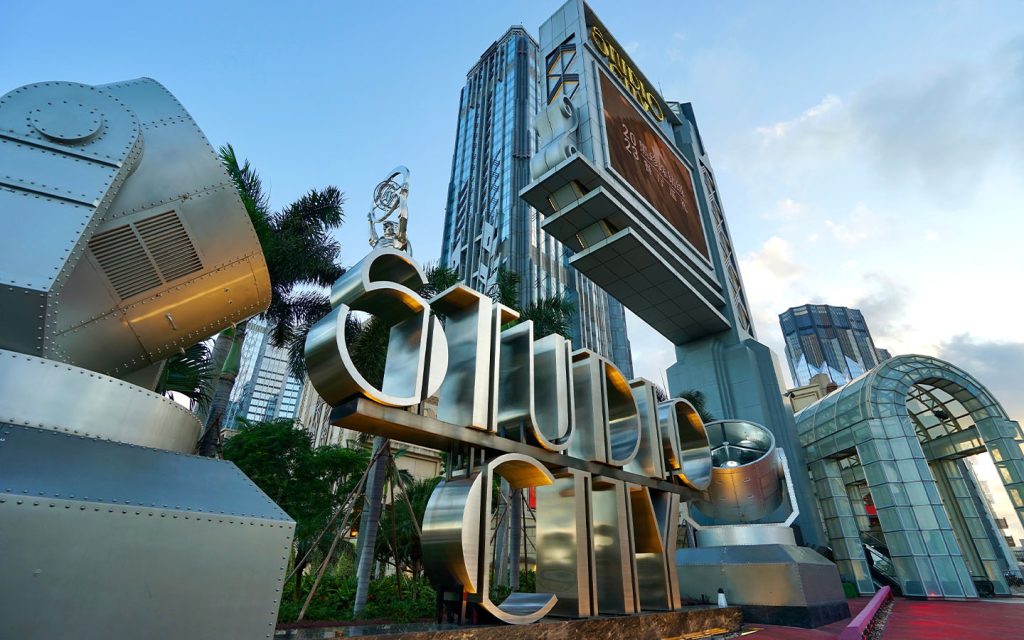
David Ho, a Macao resident who runs the popular YouTube food and travel channel, 澳門大衛MacauDavid, believes that there are numerous benefits to going on a hotel staycation in Macao. The full-time YouTuber says that as an international tourism city, Macao not only possesses excellent tourism facilities, but it also has some of the lowest luxury hotel prices in the world.
The same is true for the gastronomic offerings of local integrated resorts, which Ho describes as “diverse,” “delicious” and “cheaper than other international tourism cities.”
[See more: Keep your cool: Six hotel pools in Macao that offer day passes]
“The biggest advantage of having a staycation in Macao is that with the price of one air ticket, we can spend one whole vacation in the city,” says Ho, who has worked with government departments in Macao and Guangdong to promote food and tourism in the Greater Bay Area.
With a budget of 10,000 patacas, Ho points out that it is possible to go on two staycation trips in Macao. He proposes two staycation itineraries, both of which last for three days and are priced for a family of three, with each stay totalling around 5,000 patacas. Ho offers some suggestions on possible dining and entertainment options, although there are so many options in each of the integrated resorts that you’ll be hard pressed to run out of choices.
Itinerary A
Stay: Studio City, with a room rate of approximately 1,040 patacas per night
Lunch: Rossi Pizza by Rossi Trattoria (average 100 patacas per person)
Entertainment: Studio City Water Park (520 patacas)
Dinner: Din Tai Fung (average 150 patacas per person)
Itinerary B
Stay: JW Marriott Hotel Macau (Galaxy Macau), where a room is about 1,500 patacas per night
Lunch: Laurel Restaurant (average 150 patacas per person)
Entertainment: Grand Resort Deck (Free for hotel guests)
Dinner: Peking Duck at Blossom Palaces (average 100 patacas per person)
Make an investment

For those looking to invest, the government cash handout is just enough, as 10,000 patacas is typically the fixed minimum deposit amount for many investment products offered by most local banks. That’s according to Kevin Xia, the president of the Macao Trading Group (MTG), the SAR’s largest student finance society.
[See more: Stablecoins are inching closer to mainstream approval]
Xia, who has been investing in structured products, stocks and exchange-traded funds (ETF) since 2020, suggests three investment options below, ordered by increasing levels of risk.
Fixed deposits
“A fixed deposit is a product that allows you to lock in your money for a fixed term (1, 2, 3, 6, 12, 18 or 24 months). It offers higher interest rates than regular savings accounts, providing stable and predictable returns. The benefit of a fixed deposit is that it has low risk with principal guaranteed. However, it only provides modest returns (at around 2 percent) and offers limited liquidity during the deposit term without penalty.”
Structured products
“Structured products combine deposits with financial derivatives linked to indices such as interest rates, exchange rates, stocks, or commodities. Depending on the underlying asset, this product generally offers higher returns than fixed deposits, but also comes with embedded risks. This is more suitable for investors with moderate risk appetite and some understanding of financial markets, as the return and principal are not guaranteed.”
Funds
“A fund shares similar features to structured products in terms of potential returns and risks, and allows investors to have a more direct interaction with the financial market. Banks such as BOC Macau act as an agent for many fund houses offering various investment funds, including equity funds, balanced funds, bond funds, and currency market funds. These funds can be bought through monthly investment plans with a minimum amount of HK$1,000.
“Funds allow investors to diversify their portfolios and offer good liquidity. Yet, the returns vary widely depending on the fund type; equity funds may offer higher turns with higher risks and bond funds are less risky but lower yield.”
Exchanging patacas for US dollars
Xia also says that another “risk-free way” method to earn interest is to exchange Macao patacas for US dollars, a method that takes advantage of the peg system between the pataca, the Hong Kong dollar and the greenback, and the current interest rate differences between the greenback and the Hong Kong dollar.
The MTG president notes that currently the US dollar’s short-term interest rate, the Secured Overnight Financing Rate (SOFR), current stands at roughly 4.3 percent, while the Hong Kong dollar’s interest rate, the Hong Kong Interbank Offered Rate (HIBOR), has fallen to a low of 3.08 percent in recent times due to the Hong Kong government’s injection of cash into the city’s banking system.
Taking advantage of this present situation, Xia says that converting 10,000 patacas to US dollars instead of Hong Kong dollars would yield a greater return. “For example, depositing 10,000 patacas equivalent in HK dollars would yield approximately 308 patacas in interest, whereas depositing the same amount in US dollars would yield about 430 patacas, reflecting the higher US interest rates.”
Xia mentions that there is minimal risk to this type of trading due to the “stable pegs linking the Macao pataca, Hong Kong dollar and US dollar,” which reduces the risk of currency fluctuation, with the Hong Kong dollar tied to the US dollar within a range of 7.75 to 7.78 HKD per USD.
Those interested in engaging in this type of investment may do so via many leading brokerage firms.
Set up a home gym
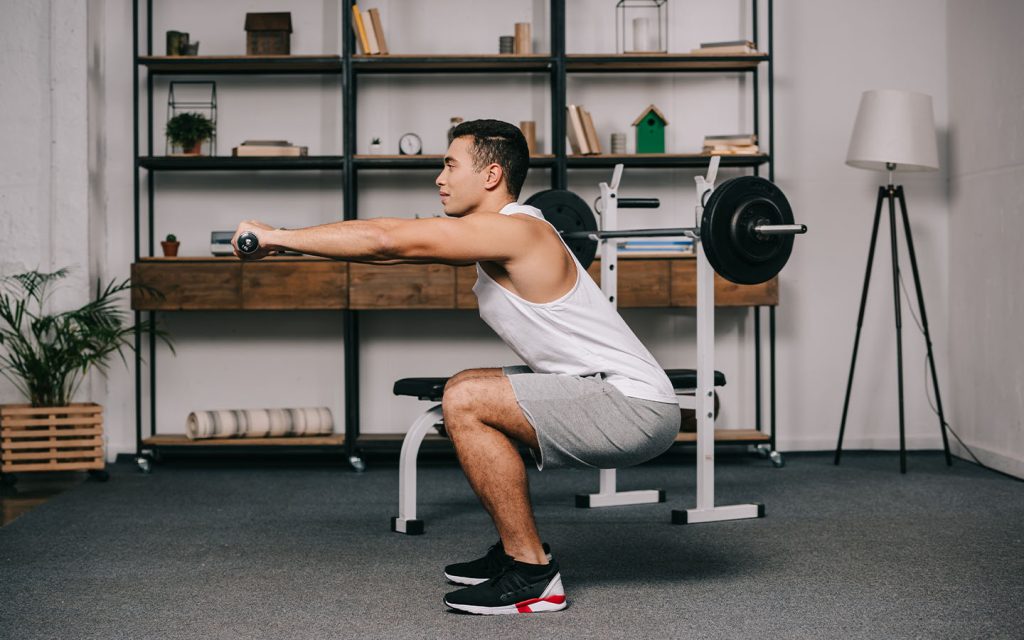
Home gyms can be expensive to build, but a budget-friendly setup on a 10,000 patacas budget is definitely doable, so long as you choose your equipment wisely. According to Alvin Salinas, a local up-and-coming local professional boxer who won his first professional match this year, “you don’t need complicated gear, like a treadmill,” and can instead start with “beginner-friendly, easy-to-use sports equipment, like jump ropes and exercise bands.”
[See more: Men need to workout much harder for the same health gains as women]
The 22-year-old athlete says that exercising at home can be as simple as skipping rope or laying down a yoga mat and following YouTube instruction videos for body weight exercises.
Here are Salina’s ideas for a compact and cost effective home gym:
Jump rope (100 patacas): “This is an economical option for cardio workouts that also improves coordination. It’s easy to store and can provide a solid workout in a short time. I highly recommend this for people to buy!”
Yoga mat (200 patacas): “An essential item for any home gym, a yoga mat provides comfort during stretching, yoga, or bodyweight exercises.”
Foam roller (200 patacas): “Recovery is key in fitness, and a foam roller helps relieve muscle soreness and improve flexibility. It’s a great addition for post-workout care.”
Resistance bands (300 patacas): “Resistance bands are super versatile and portable, making them great for different workouts. They can target various muscle groups without taking up much room.”
Exercise ball (400 patacas): “An exercise ball is excellent for core workouts and stability training. It can also be used in various exercises to enhance balance.”
Kettlebells (800 patacas): “Kettlebells are versatile tools that can be used for both strength and cardio workouts. They allow for a wide range of exercises to keep your routine interesting.”
Adjustable dumbbells (2,500 patacas): These are fantastic for strength training and save a ton of space since you can adjust the weight. They’re perfect for a variety of exercises.
Aside from purchasing equipment for a home gym, Salinas also suggests investing some of the 10,000 patacas in gym membership or in any “sports facility that fosters a community-oriented environment.”
He explains that “having a lot of equipment at home doesn’t guarantee you’ll stay motivated to exercise,” and that “being part of a supportive community encourages mutual motivations, helps everyone push each other, and keeps you committed to showing up every day.”
Get some beauty products for a DIY glow up
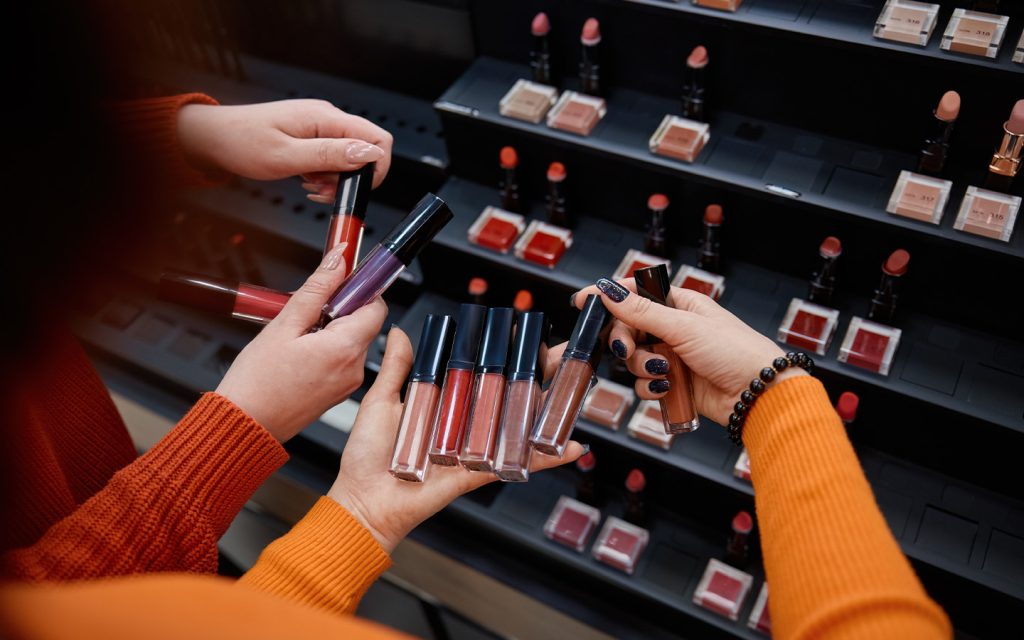
Cassandra Chiu is a beauty expert and with good reason. The 24-year-old Macanese freelance actress, model, dancer and digital creator represented Macao last November as the city’s first-ever representative at the Miss Universe beauty pageant, making it all the way into the top 30.
As part of her preparation for last November’s contest, the Macao local was required to take courses in hair styling, catwalk techniques and makeup application. When it comes to the latter, Chiu says she generally employs “cheap and high end products because some cheap products work very well” while “some high end products are not replaceable in my own routine.”
[See more: Nine questions for Cassandra Chiu, the first ever Macao contestant in Miss Universe]
The following are what Chiu considers to be “must haves for anyone into skincare and beauty,” which can be purchased with a 10,000-pataca budget.
Makeup products (between 1,690 to 4,270 patacas)
- Foundation (Ranging from 100 to 500 patacas depending on the brand. For example, it would be 100 patacas in a pharmacy, 500 patacas at YSL and as cheap as 20 to 50 patacas from Taobao)
- Primer (100 to 400 patacas)
- Blush (50 to 200 patacas)
- Concealer (50 to 200 patacas)
- Contour stick/palette/powder (200 to 400 patacas)
- Eyebrow pencil (10 to 20 patacas)
- Eyebrow powder (100 to 300 patacas)
- Eyeliner (20 to 200 patacas)
- Eyeshadow palette (120 to 400 patacas)
- Fake Eyelashes (20 to 50 patacas) (optional)
- Finishing spray (200 to 400 patacas)
- Lipstick (100 to 400 patacas)
- Lip Gloss (100 to 400 patacas) (optional)
- Mascara (20 to 200 patacas)
- Setting powder (100 to 200 patacas)
Skincare (between 450 to 1,000 patacas)
The price also depends on brands but Korean brands are very affordable.
- Toner (100 to 200 patacas)
- Serum (150 to 300 patacas)
- Eye cream (optional) (200 to 500 patacas)
Hair products (between 500 to 1,000 patacas)
- Hair mask (100 to 300 patacas)
- Hair oil (200 to 500 patacas)
- Hair straightener/curler (200 patacas or more)
Beauty treatments (between 2,500 patacas to 4,800 patacas)
- Eyelash extensions (200 to 400 patacas) per month
- Facials (500 to 1,000 patacas) once or twice per month
- Hair treatment (800 to 1,000 or more patacas) once a month
- Hair dye (500 to 1,000 patacas) once every 2 to 3 months
- Nails /per month or biweekly (200 to 400 patacas)
- Wax/laser treatments per month or biweekly (300 to 1,000 patacas)
Buy an entry-level vintage watch or accessory

“Collecting – whether it be gems, jewellery, watches, accessories, or any other type of vintage or antique collectibles – is a rewarding and enjoyable hobby, as well as a lifestyle,” says Alexander W. K. Leung, the founder of Alexander House, a Macao-based vintage shop.
Leung doesn’t “advocate viewing collectibles solely as investments,” although he admits that “many items can appreciate significantly in value over time.” Still, the fourth-generation pawn broker, who also moonlights as a university lecturer in gemmology, argues that “collecting is not just about possession; it’s about the stories each piece tells and the connections you forge along the way.”
[See more: Where to shop for vintage fashion in Macao]
Here are five of Leung’s picks from his shop that can be purchased with a budget of 10,000 patacas, and his written remarks about each piece.
IWC Automatic Date wristwatch (8,800 patacas)
“This vintage timepiece (produced in the 1970s by the International Watch Company or IWC) features a rectangular stainless steel case with elegantly rounded corners, measuring from lug to lug 40 mm and a width of 31.5 mm, complemented by a silver dial with the classic “double logos” style (‘IWC’ and the printed ‘International Watch Co.’ script). This rectangular IWC Automatic Date is not only a rare catch, but also an ideal choice for everyday wear. Wearing this watch is sure to evoke a sense of nostalgia, perfectly capturing the essence of 1970s style.”
Tudor Prince Oysterdate “Big Rose” (8,800 patacas)
“The Tudor Prince Oysterdate ‘Big Rose’ dating from 1963, boasts a 34 mm size, making it ideal for slimmer wrists. The satin silver dial exhibits a charming light patina that adds character and is adorned with polished dart markers and dauphine-style hands. The pièce de résistance of this exquisite timepiece is the rare and beautifully detailed ‘Big Rose’ Tudor logo at 12 o’clock, an intricate applied element that was subsequently replaced by the iconic shield logo in later models. This vintage watch epitomises elegance, showcasing the iconic Oyster design that connects the Tudor brand to its prestigious sibling, Rolex.”
Vulcain Chronomètre pocket watch (3,800 patacas)
“Initially dedicated to the craftsmanship of pocket watches, the Vulcain brand transitioned to wristwatches during World War II in response to growing military demand. A remarkable testament to this legacy is this Vulcain Chronomètre, an exquisite 41 mm stainless steel pocket watch produced in the 1930s, during the vibrant Art Deco movement that thrived across North America and Western Europe. This timepiece features an architectural step-like design case, complemented by a roundish triangular bow that elegantly embodies the Art Deco aesthetic. With its aged patina, this watch exudes a unique charm, promising to become an iconic antique of the Art Deco era in the years to come.”
22K gold pendant (7,500 patacas)
“This exquisite antique 22k gold pendant, dating from the late 19th to early 20th century, and measuring 29 x 27 x 2 mm, elegantly shows the profile of a maiden – a quintessential representation of beauty in the Art Nouveau style. The design of this pendant is striking in its simplicity. The maiden’s profile is accentuated against a pristine gold backdrop, framed by a characteristic Art Nouveau whiplash design inspired by the organic forms of nature – plants and flowers. Today, Art Nouveau pieces like this pendant are highly coveted, representing not just artistry but also a significant cultural shift in the perception of women’s roles in society.”
Dunhill cigarette case (4,800 patacas)
“Historically, the Dunhill brand carved its niche as a leading tobacconist. A standout piece from this era is this exquisite 1950s vintage Dunhill brown alligator belly leather cigarillo case with gold accent. What sets this cigarillo case apart is its mirror-polished gold-plated interior, featuring a machine-turned wavy pattern frame – an impressive detail that distinguishes it from many other Dunhill cases, which typically have plain interiors. Measuring approximately 150 x 90 x 12 mm, it is perfectly thin for a discreet fit in an inner jacket pocket, exemplifying British elegance and masculinity.”
Start an art collection
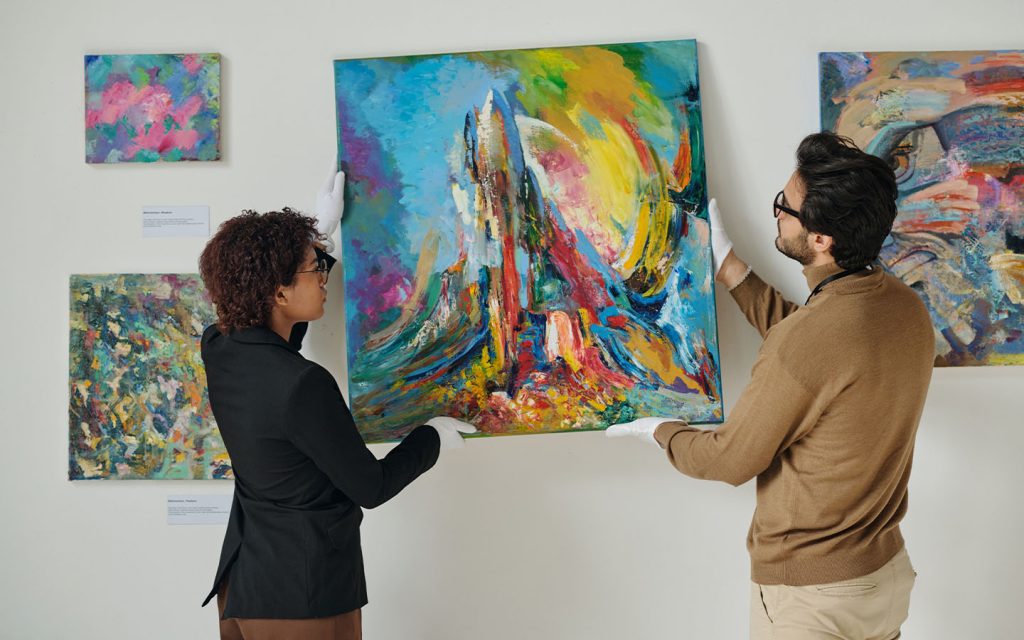
Michael Whittle, an associate professor with University of Macau’s (UM) Department of Art and Design, says the government’s cash handout represents “a fantastic opportunity for residents to begin their own art collections,” as 10,000 patacas is “absolutely” enough to kickstart such an endeavour.
Whittle explains that with 10,000 patacas, it is possible to “buy several pieces of art or one significant work”, with the price generally determined by “how established the artist is and their experience.”
“For those new to collecting, prints and editions are an excellent way to start buying art,” the academic suggests. “I would also encourage everyone to visit student exhibitions and graduation shows as well, as they are always a good place to hunt for new talent.”
[See more: Programme details for Art Macao 2025 have been released]
When it comes to art acquisition, Whittle says that his “core advice” is to focus on purchasing art that one likes, as opposed to treating it as an investment. “It’s a great way to support local talents, and I truly believe that living with art makes life richer,” he says.
Below are the art expert’s ideas on how to best start building an art collection with 10,000 patacas.
Affordable Artworks to Consider: “There are several accessible entry points for new collectors. I would suggest looking into limited edition prints, contemporary ink art, photography, and, most importantly, works by emerging local artists.”
Expected Price Range: “You can find some wonderful pieces without breaking the bank. Prints and photographic works can be bought for as little as 2,000 patacas, depending on the edition number and the artist’s experience.”
Where to find affordable art in Macao
- Taipa Village Art Space: Located in the Taipa Village charm, this quaint gallery is all about promoting local talent.
- Ox Warehouse: Founded in 2002, this non-profit provides an excellent experimental platform for local contemporary arts.
- Creative Macau: Located at the Macao Cultural Centre, this gallery focuses on contemporary works from local, Chinese, Portuguese, and expatriate artists.
- Albergue SCM’s Art Gallery: Tucked away in the beautiful Albergue SCM, this gallery is usually filled with contemporary artworks from both famous and upcoming artists from Macao.
- Cloud Gallery: Debuting in the Barra neighbourhood, this commercial gallery provides a platform for emerging artists who may have smaller collections and aims to make their art accessible for public purchase.It is located on Rua do Almirante Costa Cabral.
Whittle adds: “For those willing to look slightly further afield, I’d also recommend exploring galleries in Hong Kong, like Gallery Exit, which promotes some of the city’s most talented emerging painters.”
He also offers a practical tip. “The humidity in Macao can cause paper to expand and buckle, so I recommend spending a little extra on framing to make sure your new artworks are well protected.”
Book a course at an education centre
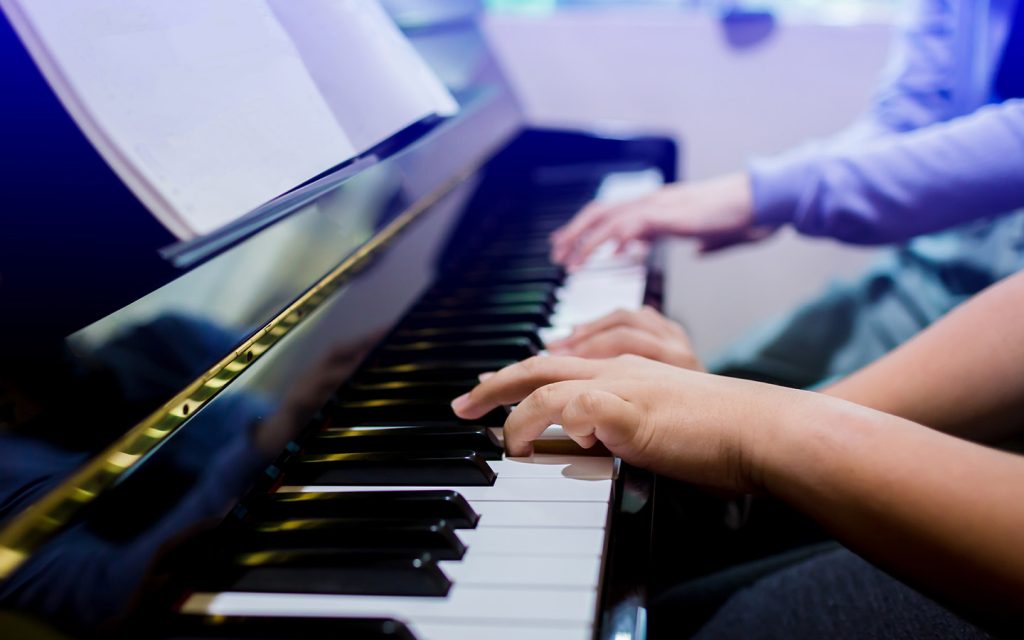
If you’d rather not blow your government money on material possessions, why not consider investing it on yourself and developing a new skill? Muse Education Centre (鳴詩音樂藝術中心) is one local institution where you can cultivate your ability in music and the arts, with courses that are suitable for children (ages 5 and above), teenagers and adults of varying skill levels.
“Whether students are pursuing graded certifications, preparing for performances, or simply exploring music and art for personal enrichment, Muse offers a well-rounded curriculum that balances skill development with artistic exploration,” the centre says.
Muse’s music programs are far reaching with lessons available across four categories – instruments, vocal, music theory and composition, as well as exam preparation.
For instrumental training, students can choose from a range of instruments, including the piano, strings (violin, viola and cello), guitar (classical and electric), woodwinds and brass (flute, saxophone), percussion (drums, orchestral percussion) and traditional Chinese instruments (like the guzheng).
Meanwhile, students enrolled in vocal training can practise classical contemporary singing or choral singing. As for music theory and composition lessons, learners can expect to cover content relating to notation, harmony, counterpoint and songwriter. Exam preparation courses also offer structured lessons for students looking to acquire ABRSM, Trinity or Rockschool certificates.
[See more: 3 Macao music studios where you can jam without a membership]
Muse also has artistic and wellness programs covering visual arts, as well as yoga and mindfulness. With the former, learners can look forward to acquiring drawing and painting techniques using mediums such as pencil, charcoal and watercolour. Younger students, meanwhile, can engage in creative projects by partaking in the crafts and mixed media strand.
Yoga lessons are also available for kids and adults, with younger learners taking part in movement-based sessions that improve their focus and coordination. Adult participants, on the other hand, can engage in stress relief and flexibility training.
Classroom learning is only one part of Muse’s curriculum, as students are also given the opportunity to showcase their skills to a wide audience through quarterly student concerts, community events and charity initiatives.
Prices will vary, although Muse notes that “with a budget of 10,000 patacas, students can create a customised learning plan in consultation with academic advisors.” The centre also adds that it is possible for family members to transfer their funds among themselves “to collectively fund courses for their children or relatives.”
Splurge on a memorable, luxury meal
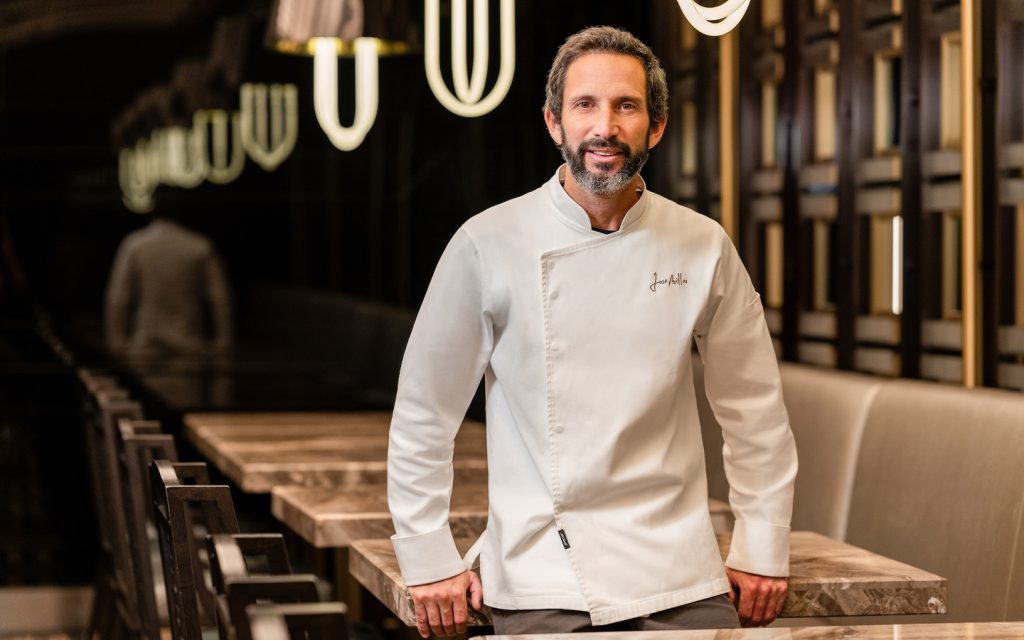
Macao has no shortage of restaurants for you to splurge your 10 grand on, although food and wine researcher, writer and university lecturer, Annabel Jackson personally recommends a dinner for four at the Grand Lisboa Palace establishment, Mesa by José Avillez.
“I like what Chef José is doing in Macao, which is almost a contemporary take on how Portuguese cuisine can be explored in this tiny corner of China,” says Jackson, who has written various books about Macao gastronomy, including her latest, The Making of Macau’s Fusion Cuisine: From Family Table to World Stage.
She praises Mesa for its multifaceted offerings, noting that “there is texture; crispy suckling pig with pork trotters, chicken piri piri (skin on) with a black truffle stuffing; and there are touches of luxury: seafood rice (my favourite Portuguese dish and one of my all-time top seafood dishes in the world) is topped with caviar.”
The food expert suggests indulging in Mesa’s eight course set meal, “Eight Moments,” which costs 1,288 patacas per head and features a rich variety of delectable dishes ranging from suckling pig to carabineiro, shrimp and pork wonton with fisherman’s stew sauce.
[See more: Portuguese star chef José Avillez dishes on his work at Mesa]
Jackson, who is also a wine connoisseur, notes that SJM’s extensive wine list, which weighs 2 kilograms and “is consistently ranked among the top 100 in the world by Wine Spectator magazine,” was another reason for her selection of Mesa.
For wine, she recommends starting “with a bottle of champagne from the boutique, biodynamic estate Larmandier-Bernier” or more specifically their Longitude Premier Cru Extra Brut (1,500 patacas), which she says “is a terrific, linear blanc de blancs from this Chardonnay specialist.”
Diners should follow this up with Charme, a variety of red wine from her favourite Douro producer, Dirk Niepoort, which the food expert describes as “a wine of restraint and elegant, quite Burgundian in style.”
To wrap it all up, Jackson recommends a half bottle of the award winning Domaine Franco-Chinois Petit Manseng (800 patacas) from Hebei Province. “Dinner ends, then, with the aroma of almond, and the juiciness of apricot,” she says.
Take a holiday to Vietnam
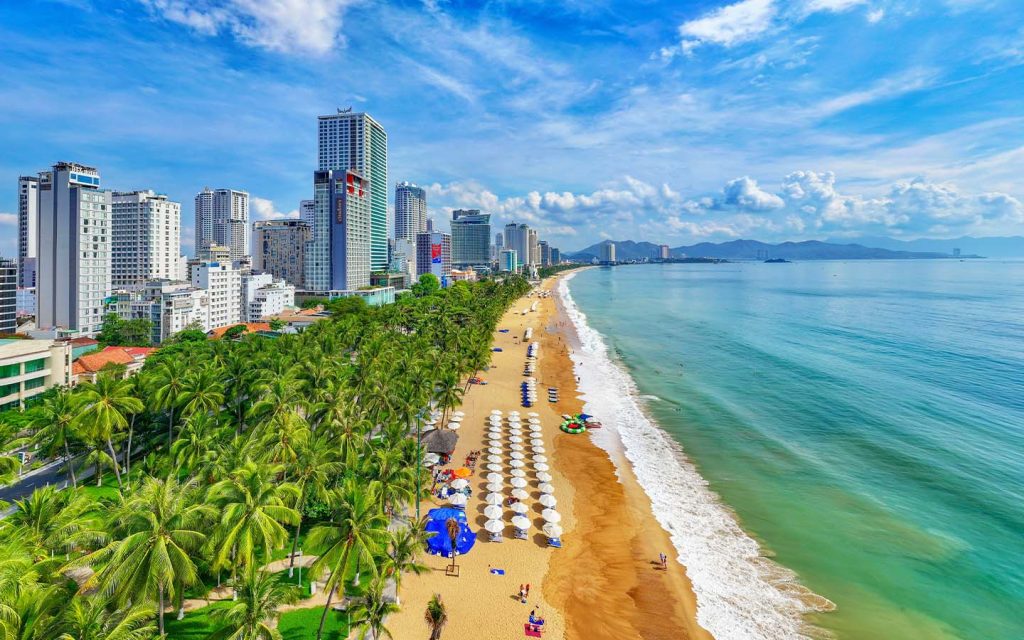
Originally from the US, University of Macau English instructor, Kevin Maher, has been travelling across Asia and other parts of the world since 1996. At last count, he had visited around 87 countries and territories.
The teacher keeps an extensive video record of his trips through his long-running YouTube channel, Sidetracked, which is updated on a regular basis and features first-person videos of him walking the streets of Macao and other locations such as Cambodia, Cuba, Kenya, Mexico, South Korea and Thailand. Fresh from his trip to Vietnam, Maher gives his suggestions for a four day trip to the beach city of Nha Trang – reachable from Macao via Bamboo Airways for around 3,000 patacas for the return trip.
[See more: Here’s what to know before you go to Vietnam]
Maher points out that many of Nha Trang’s attractions, such as the cathedral or the Long San Pagoda are free to enter. The 8th century Po Nagar Cham Towers charge a mere 30,000 Vietnamese dong for entry – equal to just over 9 patacas. The VinWonders resort island offers a cable car ride, amusement park and golf, with adult entry starting at the rough equivalent of 108 patacas.
“Most importantly, enjoy the beaches!” Maher adds. “There are miles of them right across from the majority of the hotels and restaurants.”
Hotel
The Happy Light Central Nha Trang (see the website) offers rooms for the equivalent of 300 patacas a day, but Maher suggests an upgraded room that has windows on 3 sides for the equivalent of 500 patacas.
Restaurants
Seafood restaurants and rooftop restaurants abound in Nha Trang, where you can get a meal for as little as the equivalent of 50 patacas. Maher recommends Nhà Hàng Cá Bay – View Biển for seafood and barbecue and Altitude Rooftop Bar for European bar vibes. The Sailing Club offers a great bar menu and a beachfront location.
